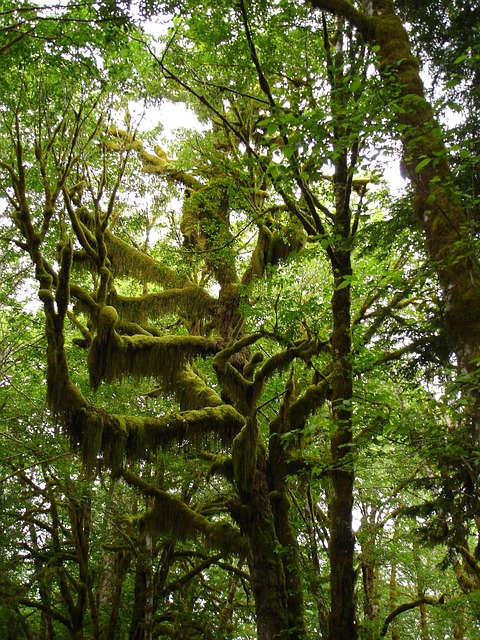Managers report that many things act as barriers preventing them from listening effectively in the workplace. Distractions from external sources such as endless emails, busyness at work, noise from “open office environments” and time pressures, are high on the list as impediments. Managers also identify what can be described as internal barriers to listening – preconceptions about an individual staff member, assumptions about what the individual wants to talk about, anxiety when the speaker is sharing difficult emotions, and absorption with their own personal issues. Managers report, too, that they tend to try to solve problems before they really know what the employee’s problem is, interrupt people to tell their own stories and have difficulty maintaining their focus on a speaker when they are perceived to be “rambling on”.
Added to these difficulties experienced by managers is what Johann Hari describes as our “lost focus” – an ongoing decline in our ability to pay attention for any length of time because of the “fire hose” of information flooding our minds through emails, social media and news broadcasts. In his book, Stolen Focus: Why You Can’t Pay Attention, he highlights our inability to stay-on-topic, be truly present and achieve flow. Research shows that our attention span is diminishing rapidly, making it all the more difficult for managers to engage in “deep listening”. In a recent podcast, Gloria Monk PhD drew on this research to explain “Why our attention spans are shrinking”.
The essence of deep listening
Joan Halifax, in her book, Standing at the Edge, describes deep listening as truly listening in the present moment with openness and curiosity. She explains that this requires us “to step out of self-absorption, self-deception, distractions” and move away “from the trance of our technological devices”. Joan maintains that deep listening involves “really hearing” someone else by listening “with body, heart, and mind”. In her words, it also involves being able to “listen past the filters of our personal history and our memories” – it involves self-lessness. Too often, we have to tell our stories to legitimate ourselves in the eyes of the other person.
Larissa Behrendt, in her novel After Story, has one of her characters describe deep listening as “listening with respect” – not trying to hurry the other person to finish, paying full attention without interrupting the speaker. She reinforces the need to be “ready to listen” – “to prepare the space and listen” so that you can take in the wisdom of the speaker and the story they have to tell. Larissa, Distinguished Professor of Indigenous Studies and Research at UTS, maintains that deep listening has its origins in the ancient cultural ways known as Winanga-Li, where “the silences are as powerful as the words”.
Deep listening for Richard Wolf, author of In Tune: Music as a Bridge to Mindfulness, occurs when we “not only hear music but feel it”. This involves feeling the music “with your body and soul”. For Richard, music can help the listener/musician overcome internal barriers to listening by “filtering out” distorting elements such as biases, prejudices, blind-spots and false assumptions.
Benefits of deep listening
There are many benefits from deep listening that accrue to the listener as well as the person being listened to. I have summarised some of the key benefits that are identified in literature that I have been reading lately:
- Facilitating the healing power of storytelling: deep listening enables a person to share their story of pain, suffering and trauma. Annie Brewster details the way this can happen in her book, The Healing Power of Storytelling: Using Personal Narrative to Navigate Illness, Trauma and Loss. It is because of the healing power of storytelling that Annie has established the Health Story Collaborative. Jana Pittman, in her biography Enough: accept yourself just the way you are, highlights the destructive impact of keeping painful things bottled up – you can lose yourself. As someone who has experienced deep pain and suffering – through three miscarriages, a marriage breakdown, media taunting and bullying, “a cervical cancer scare”, multiple injuries destroying her Olympic Dream, battling with financial difficulties and an eating disorder – Jana can readily attest to the healing power that facing her pain and sharing her story has provided her. She maintains that running away from pain can be a “heavy burden” because “bottling it up” is like “carrying it round like a ball and chain”. By facing her pain, embracing it and sharing it, she has found a new release to achieve even greater goals; the alternative, avoidance strategy, “leaves you with a whole lot of defensive walls and only a short ladder”. Larissa Behrendt, in her After Story novel, has one of her characters comment that there is “strength in saying things” because “it’s like a curtain being lifted”.
- Achieving resonance: `Ginny Whitelaw, innovator in leadership development, contends that leadership is about achieving resonance with followers, and that it is through listening that leaders capture the energy of followers and thus focus and amplify the collective energy of a team. She explains her underlying principles, and supporting neuroscience, in her book, Resonate: Zen and the Way of Making a Difference. Deep listening for Ginny involves getting on the “same wavelength”, instead of “talking past” the other person. This means, in effect, that energy vibrations of the leader and follower become aligned and therefore amplified. The sensitivity involved in such deep listening changes the listener and enables healing of the storyteller.
- Developing empathy: Joan Halifax contends that deep listening develops empathy, motivates compassionate action and obviates self-absorption. She provides examples of deep listening in her book, Standing at the Edge, while recognising that empathy is an “Edge State” – that can lead to significant personal and social contributions, but potentially lead to “empathic distress”. This latter downside of deep listening and the attendant empathic feelings can arise where a person is unable to separate themselves from the sufferer – they effectively “own” the other’s suffering. In her book, Joan describes situations where she has experienced empathic distress, however momentarily, and offers ways to overcome this other-absorption, including her G.R.A.C.E. technique.
Ways to develop deep listening
There are multiple ways to develop deep listening and, like any art, “practise makes perfect”. However, we each have our personal and historical impediments to achieving deep listening at any point in time. Actively working to cultivate deep listening can be very beneficial for ourselves and others we interact with on a daily basis. Several authors suggest different ways to develop deep listening (apart from consciously practising it in the present moment):
- Sounds as an anchor in meditation: meditation often involves choosing an anchor that can enable us to re-focus once we experience distractions during meditation. While our breath is often used as an anchor, sounds can be an alternative. Richard Wolf suggests that focusing in on the sounds of our breath along with the gap between breaths, can effectively cultivate deep listening. We can also tune into our environment, including what he describes as the “room tone”. Richard also encourages the development of “dual awareness” where we not only focus on the sounds of our breath but also become consciously aware of our associated bodily sensations.
- Music to quiet the “inner voice”: Richard maintains that playing a musical instrument or listening to music can cultivate deep listening because of the sustained concentration required. You are effectively training yourself to tune into the music (by fully attending to the sounds) and experiencing the music emotionally and bodily. Richard argues that the concentration required quiets the self-critical inner voice and prevents contamination by our “cognitive limitations”. He contends that music enables us to achieve an alignment of mind, body and emotion. Richard suggests that playing an instrument for others not only develops deep listening for the musician but also provides a “stunning variety of sonic, emotional and musical elements” for a discerning audience – a catalyst for deep listening on their part. One can readily picture a young child dancing in a totally uninhibited way to music played by a street performer who is totally absorbed in his or her art.
- Tuning into nature: nature provides silence and unique sounds that enable us to experience our interconnectedness to everything, including people who are attempting to gain a “hearing”. Gordon Hempton reminds us that silence in nature does not mean the absence of sounds but “an acoustic state, free of intrusions of modern, man-made noise”. Gordon has recorded his journey as an activist for nature’s “silence” in his book, One Square Inch of Silence: One Man’s Quest to Preserve Quiet. Through his work as a sound recordist and an acoustic ecologist, he has encouraged people to heighten their auditory awareness of the unique “soundtracks” that surround us in nature and to observe “the quiet between the notes” (so that we can better appreciate the value of silence and stillness). Gordon’s crusade for silence and listening to nature is mirrored in the work of Christine Jackman, author of Turning Down the Noise: The Quiet Power of Silence in a Busy World. In a chapter on nature, she highlights the healing power of nature and the need to tune into nature to reduce our “emotional inflammation” and regain our capacity to be quiet and listen. Like Gordon, she contends that when we listen to nature “our listening horizon extends”. Polar photographer, Camille Seaman, maintains that spending time in the stillness and silence of nature “dissolves the veil of separateness” and increases our understanding of, and respect for, our connectedness.
- Adopting a “not Knowing” mindset: Joan Halifax recommends cultivating a “beginner’s mind” – the stance of “not knowing”. She maintains that we can never really know and understand the complex mix of emotions another person is experiencing, or the precursor events at different points in their life, or the unique interplay of triggers that were the catalyst for their current psychosomatic state. This perspective accords with the advice of Frank Ostaseski to cultivate a don’t know mind. Robert Wilder discusses the challenges and benefits of living a “not knowing” life in his podcast, The Not-Know-It-All: The Struggle of Not Knowing.
- Reflective practice: reflection on our communication experiences can help us to gain insight into the barriers we put in the way of deep listening. If we are honest in our reflections, we can improve our awareness of our habituated behaviours (such as interrupting others) that act as blockages to our deep listening. I have posted a sample of questions for reflection on personal interactions in a previous post.
Reflection
As we grow in mindfulness by spending time observing and listening in nature, reflecting on our interactions, meditating on internal and external sounds and undertaking other mindfulness practices, we can gain awareness of our personal impediments to developing the art of deep listening. For me, some of these impediments are a tendency to deflect the conversation when emotions become intense (on either side of the conversation), to divert the conversation to my own story or to demonstrate knowledge and experience to prop up my sense of self-worth or external credibility.
A further reflection (25 August 2023)
Reflecting on my behaviour when interrupting somenone’s conversation, I realise that sometimes I come from an “I know” position, not a “don’t know” perspective. I feel I have to explain that I have experienced (directly or indirectly) what they are talking about, read about it or heard someone else talking about it. The net effect is that I don’t reflect back the communicated emotions and divert the conversation onto my issue and away from challenging emotions. I wonder whether this habituated behaviour has resulted from my academic background (the need to be seen to know).
________________________________
Image by Monika Iris from Pixabay
By Ron Passfield – Copyright (Creative Commons license, Attribution–Non Commercial–No Derivatives)
Disclosure: If you purchase a product through this site, I may earn a commission which will help to pay for the site and the resources to support the blog.









